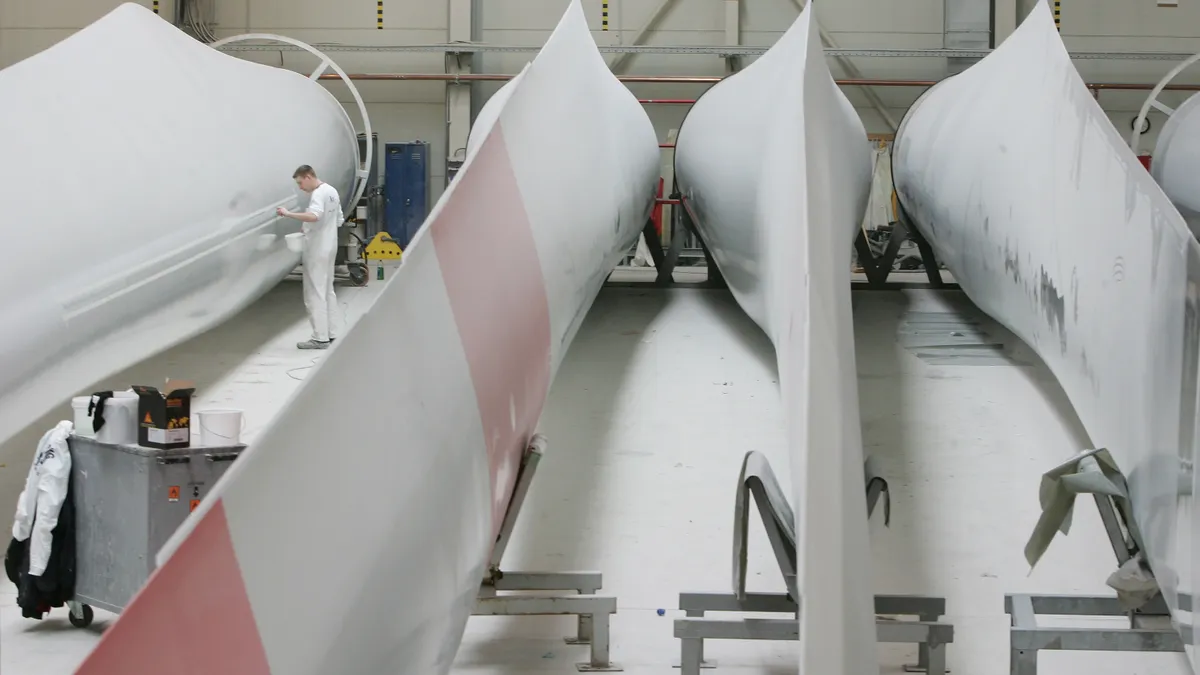Dive Brief:
- The rapid growth of the renewable energy industry during a period of global supply chain disruptions is leading to shortages and price hikes of raw materials such as neodymium, used in wind turbines, and polysilicon, used in solar modules, says a February report by consulting firm McKinsey & Co.
- The industry can ease the impact of future price and material availability volatility with proactive moves like establishing vertical integration and partnering with suppliers, according to the report.
- Shortages of labor and machinery also need to be addressed, the report says – in particular, the lack of vessels equipped to install offshore wind turbines. That scarcity poses a “real threat” to the construction of the 20 offshore wind farms that have passed the final investment decision stage, the report says.
Dive Insight:
McKinsey predicts that the commodity squeeze the wind and solar industries face will get tighter as a result of global decarbonization efforts, projecting a 50-60% shortage in 2030 of the rare earth metals neodymium and praseodymium — both used in wind turbines.
The firm also points to Chinese production in 2020 of more than 79% of the global supply of polysilicon, and says factors like COVID caused the price of polysilicon to increase 350% between 2020 and June 2022.
Jordy Lee, program manager of the Supply Chain Transparency Initiative at the Colorado School of Mines’ Payne Institute for Public Policy, said in a 2021 interview that the mismatch in minerals processing and refining between China and the U.S. is not as much due to a disparity in natural resources as it is due to differences in labor and environmental regulations, and China’s much larger number of trained metallurgists.
“The U.S. has plenty of quartz, which is the initial material that is then made into polysilicon, and then into silicon solar cells,” said Becca Jones-Albertus, director of the Department of Energy’s Solar Energy Technologies Office, in a December interview. “The challenge in growing U.S. manufacturing has been much more an economic one.”
DOE in 2022 released a report on the topic, America’s Strategy to Secure the Supply Chain for a Robust Clean Energy Transition, acknowledging the need for critical minerals like neodymium and announcing a funding opportunity for mining innovations.
McKinsey suggests that vertical integration, such as Tesla’s recent deal with Brazilian mining company Vale S.A. to buy nickel on a long-term basis, provides “a steady supply of some of the highest-demand raw materials.”
Ørsted, a Danish offshore wind developer, agreed in 2022 to use its wind farms to provide German steel producer Salzgitter AG with zero-carbon electricity to produce green steel that Ørsted will use to build wind turbines.
“This arrangement not only reduces resource consumption and promotes circular-economy principles but also reduces the need for green-steel production capacity, thus helping to ease pressure on the supply chain,” McKinsey says.
A recent study from two Cornell University researchers suggested the complete reshoring of silicon photovoltaics manufacturing, citing the fragility of the global supply chain for silicon panels and the opportunity to reduce greenhouse gas emissions and energy consumption by shrinking global imports.
“The Inflation Reduction Act provides the necessary impetus for the domestic solar product manufacturing industry to catch up with countries that have outpaced the U.S. in clean energy technological development, innovation and production,” wrote Cornell University energy systems engineering professor Fengqi You and co-author Haoyue Liang, a doctoral student.
The IRA’s tax credits for renewable energy projects have created high demand for wind and solar, the buildout of which is going to “require a lot of talent and a lot of machinery,” McKinsey says. “Yet developers often face a shortage of both.”
McKinsey cites the growth in size of turbines for large offshore wind facilities, but a lack of vessels being upgraded to haul them, endangering offshore wind projects already in the development stage as well as future ones.
The firm also suggests that developers work with suppliers to invest in risk identification and price hedging for raw material purchases.
“The fact that wind and solar suppliers were caught off guard by the recent increases indicates that risk management capabilities are not sufficiently developed among renewable-energy [original equipment manufacturers],” the report says.














